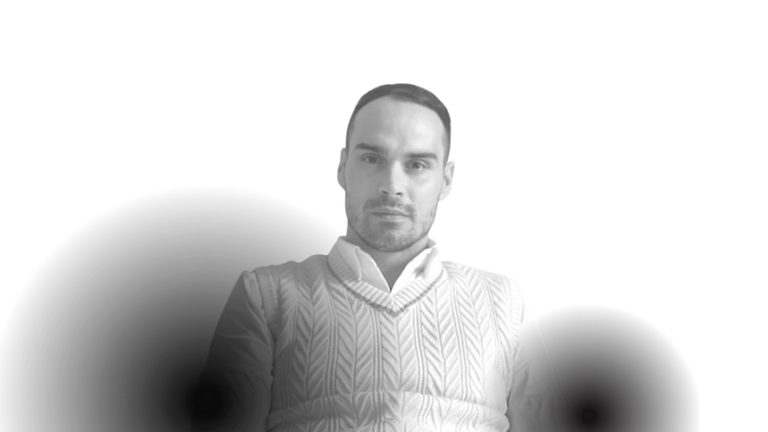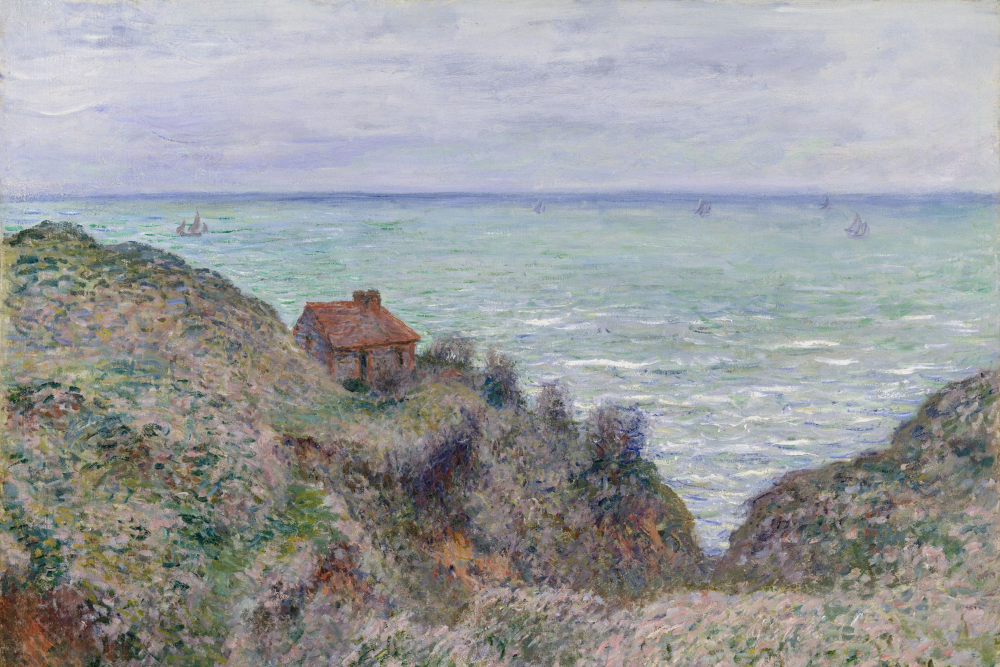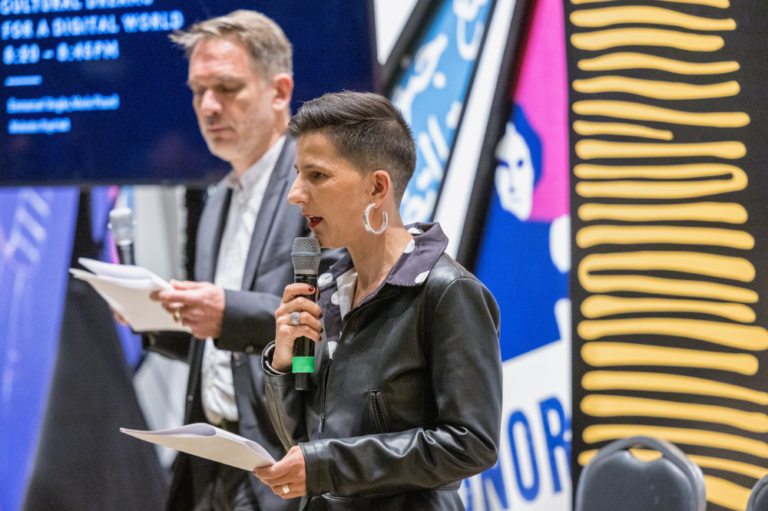
Where Are We Going? Towards a Common Horizon

Claude Monet - Cabine de la Douane Watch
By Victorien Coquery
The horizon is the place we will never reach, because no matter how much closer we get to it, it never stops receding. Dwelling on this paradox, Victorien Coquery embarks on a philosophical reflection to answer the question posed by the Night of Ideas, “Where are we going?”—for by wanting to reach the horizon at all costs, don’t we end up losing it, or at least disrupting it?
“Where do we come from? What are we? Where are we going?” The existential questions inscribed by Paul Gauguin on the painting he envisioned as his artistic legacy are embodied in the notion of horizon. The painting itself, about one meter high and four meters wide, is on display at the Museum of Fine Arts in Boston. It depicts a group of Tahitian girls and women, ranging from infancy to old age, all looking in different directions. The viewer’s gaze can thus embrace the entirety of human life, while an enigmatic blue idol in the background symbolizes “the Beyond.”
Paul Gauguin’s move to the Antipodes gave him the radical paradigm shift he needed to revolutionize his painting and move beyond the codes of Impressionism. The artist’s aspiration to push the borders of knowledge and acquire a more comprehensive and deeper understanding of phenomena is common to every field of research and physical or spiritual conquest: it applies equally well to the American pioneer of the Frontier and to the biologist exploring the workings of the human body—and recent events have provided a tragic reminder of the potential mobility of borders. Innovation does not always mean progress, but an understanding of how our actions are influenced by the horizons of our cultural, professional, and philosophical spheres seems a necessary preliminary to any thoughtful collective project: understanding the horizon can help us build the future.
As part of this year’s Night of Ideas, students at the International School of Boston have been exploring the notion of horizon, focusing on three aspects: the horizon of the physical world, the horizon of our individual being, and societies’ collective horizon.
The most common experience of the horizon is its manifestation as the basic demarcation between earth and sky. It was the source of our first representations of space, as indicated by its high-profile place in cosmological narratives: according to Hesiod, Gaia and Uranus were among the primordial gods who parented all the others; in Genesis, God separated the sky from the earth on the second day, after dividing the light from the darkness and before He formed the continents. In Etruria, long before meteorologists existed, the haruspices fulguratores (priests specialized in lightning) observed the earth-sky relationship, using the horizon as an observation laboratory by dividing it into sixteen sections to interpret the signs sent by the gods.
In the world of images, from the frescoes of Pompeii to paintings by Claude Monet and even in movies, the visible or invisible horizon is the base on which a landscape is constructed, creating more or less depth within a painting, depending on the height at which it is placed. The horizon is a structuring boundary that can also enclose. Charles Baudelaire’s sense of spleen “when the low, heavy sky weighs like a lid” is matched by his dreams of elevation “beyond the ether,” fulfilled decades later by the astronauts and astrophysicists who pushed the horizon of humanity to the edges of the universe in the field of space exploration and as far as the Big Bang in the field of time. Our representation of the world is thus based on moveable limits that recede as our knowledge expands. The need to advance seems inherent in the horizon itself, which allows us to see the invisible and eludes us whenever we think we are approaching it. Its mirage is accentuated by the light – a sort of incandescent halo that inspired Walter Benjamin with his definition of the concept of aura. The narrator of In Search of Lost Time, opening his window onto the sea at Balbec, describes the surprising sight of “a ship, absorbed and liquefied by the horizon” the closer it gets to it.
However, it was not until Edmund Husserl and the development of phenomenology that philosophers began to draw a parallel between the horizons of the physical world and those of individual experience. According to Martin Heidegger, human existence is conditioned by our inexorable march towards death (“Sein zum Tode”), whether we decide to live in awareness of it or prefer to distract ourselves by focusing our efforts on matters such as how to live longer or leave an enduring memory of ourselves behind us. This ultimate horizon is referenced by the more or less predictable events that structure our everyday lives, such as retirement, birthdays, the end of a month, the weekend, or the end of the day. Phenomenologists such as Maurice Merleau-Ponty turned their attention to the horizon of things, which always appear to us from a particular angle and according to a particular perspective, and which we can never fully comprehend. This is particularly true of our relationships with other people, whom we can never completely know and who cannot be reduced to a set of categories; like the horizon, other people always elude us. In this respect, they can prompt hope or despair—two feelings conditioned by the notion of horizon. In the fairy tale by Charles Perrault, when the young woman who disobeyed Bluebeard buys time by requesting a last prayer, she asks her sister Anne, at the top of the tower, whether she can see their brothers arriving to save her but, until the last minute, Anne can only see “a cloud of dust in the sun” and “the green grass.” This episode recalls another sister Anne—Queen Dido’s sister in Virgil’s Aeneid: when the Carthaginian queen sees Aeneas, who has betrayed her, disappearing into the distance, she climbs onto the pyre built by her sister and stabs herself through the heart with his sword. One can imagine the relief of Columbus’s sailors when they finally spotted land, or of Xenophon’s mercenaries when they reached the Black Sea after their long march through the mountains of Armenia: such landscapes are often those of our inner lives.
There is, therefore, a collective dimension to the horizon: rather than sharing the same origin, we are united by the fact that we are looking at the same horizon and moving in the same direction. The knowledge and techniques available to us at a given moment in time influence the way we see the world and imagine the future. They also have their dark sides, such as the challenges of climate disruption or anxieties stemming from the sophisticated means we now have at our disposal to destroy our fellow humans: the urgency of these collective issues creates a common destiny that helps define a generation. In democratic societies, this shared destiny is fully meaningful, as it is examined by election candidates who each defend their vision of the future; elections are times when we contemplate our common regional, national, or European horizons. The Russian army’s invasion of Ukraine challenges the cultural horizon of Europe, which had not previously seemed incompatible with Slavness. In companies, the notion of horizon is illustrated by the determination to create horizontal organization charts, each member of the organization sharing their views equally; but we should not lose sight of the fact that the decision to “horizontalize” is necessarily made by a boss whose relationship with his or her employees is a vertical one. Ultimately, by wanting to reach the horizon at any cost, you end up losing or disturbing it. The revolution in transport, the advent of television and the internet have certainly expanded our horizons, taking us closer to distant realities – but they have also distanced us from our relatives and neighbors; social media tend to enclose users in the bubble of their own interests. The culture of speed and immediacy has resulted in what Paul Virilio, in his Essay in Dromoscopy, calls the “negative horizon”: our time is fragmented, it is increasingly difficult to have perspective, and the poetic inspiration we once gleaned from the wild expanses of nature has given way to a sense of permanent emergency. And if we turn our gaze to the physical horizon of cities such as Los Angeles or São Paulo, it vanishes behind suspicious-looking clouds; in Xingtai, China, it is quite simply invisible. The horizons are in need of our care.
Where are we going? Let us contemplate the horizon without being fooled by its mirages, and let us make sure we do not to overlook the meadow in front of us because we are looking into the distance. Democracy, in particular, is confronting new challenges – external ones, such as armed aggression, and internal ones, in the form of contemporary crises. The horizon is like desire: no matter how far we advance towards it, its promised ideal is always beyond our reach. But there is no reason why we should not distance ourselves from it; instead of getting caught up in the race for fossil fuels, polluting technologies, and unrealistic ideologies, we could choose to retreat, thereby avoiding subsequent frustration and bitterness. For the Night of Ideas, a collective reflection is offered on these issues… because it takes multiple viewpoints to see the horizon clearly.
Victorien Coquery teaches French and Ancient literature at the International School of Boston. While studying at the École Normale Supérieure (2010-2015), he obtained a bachelor’s degree in history and history of art at University Paris Sorbonne. He wrote his master’s thesis upon “The philosophy of colours in Lucretia’s De rerum natura” under the direction of Carlos Lévy. After the agrégation, his teaching experience in Los Angeles, Paris, Montpellier, Longwy, and Boston led him to explore innovative pedagogies such as the setting up of an interactive exhibition on Tocqueville or the creation of karaoke videos in Latin or ancient Greek.


